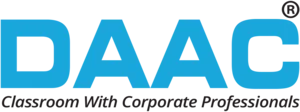Essential Tools for Frontend Web Development: A Comprehensive Guide

In the dynamic world of web development, creating a seamless and engaging user experience is crucial. Frontend developers play a pivotal role in crafting the visual elements and interactive features that users encounter. To empower developers and streamline their workflows, a set of essential tools have emerged. In this guide, we'll explore these tools, categorized for ease of understanding, to help you enhance your frontend development process.
Text Editors: The Foundation of Coding
1. Visual Studio Code
A favorite among developers, Visual Studio Code (VS Code) is a lightweight yet powerful source code editor. Packed with features like IntelliSense for code completion and a robust extension ecosystem, it's the go-to choice for many frontend developers.
2. Sublime Text
Known for its speed and simplicity, Sublime Text is another excellent text editor. It supports a wide range of programming languages and boasts a distraction-free interface, making it a favorite for those who prefer a clean coding environment.
Version Control: Collaboration Made Easy
3. Git
Git is a distributed version control system that enables developers to track changes in their codebase efficiently. GitHub, GitLab, and Bitbucket are popular platforms that leverage Git, providing collaboration features like pull requests and issue tracking.
Package Managers: Dependency Management
4. npm (Node Package Manager)
For JavaScript projects, npm is the default package manager. It simplifies the process of installing and managing project dependencies, allowing developers to focus on building features rather than manually handling libraries.
5. Yarn
Yarn is another package manager that competes with npm. Known for its speed and offline capabilities, Yarn is a great choice for frontend projects, offering reliable dependency management.
Task Runners: Automating Repetitive Tasks
6. Gulp
Gulp is a task runner that automates common frontend development tasks, such as minification, compilation, and image optimization. With a simple and intuitive API, Gulp helps streamline workflows, saving developers time and effort.
7. Grunt
Similar to Gulp, Grunt is a JavaScript task runner that automates tasks to enhance the development process. Developers can configure and run tasks easily, making it an essential tool for repetitive tasks.
CSS Preprocessors: Enhancing Stylesheets
8. Sass (Syntactically Awesome Stylesheets)
Sass is a CSS preprocessor that extends CSS with features like variables, nesting, and mixins. It makes stylesheets more maintainable and readable, enabling developers to write cleaner and modular code.
9. Less
Less is another CSS preprocessor that simplifies stylesheet development. With features like variables and nested rules, Less enhances CSS capabilities, making it more dynamic and easier to manage.
Frameworks and Libraries: Boosting Development Efficiency
10. React
Developed by Facebook, React is a JavaScript library for building user interfaces. Its component-based architecture and virtual DOM make it an excellent choice for creating interactive and responsive web applications.
11. Vue.js
Vue.js is a progressive JavaScript framework for building user interfaces. Known for its simplicity and flexibility, Vue.js allows developers to incrementally adopt its features, making it easy to integrate into existing projects.
12. Bootstrap
Bootstrap is a popular CSS framework that streamlines the process of designing responsive and mobile-first websites. With a grid system and a variety of pre-designed components, Bootstrap accelerates frontend development.
Browser Developer Tools: Debugging and Optimization
13. Chrome DevTools
Built into the Google Chrome browser, DevTools provides a set of web authoring and debugging tools. Developers can inspect and edit the DOM, monitor network activity, and diagnose performance issues, aiding in efficient debugging.
14. Firefox Developer Tools
Similar to Chrome DevTools, Firefox Developer Tools offer a range of debugging and profiling tools. With features like the Responsive Design Mode, developers can test and optimize websites for different screen sizes.
SEO Optimization: Ensuring Visibility
15. Google PageSpeed Insights
PageSpeed Insights analyzes web pages and provides suggestions to improve their performance. With a focus on speed and user experience, this tool is crucial for optimizing websites and enhancing search engine rankings.
16. SEMrush
SEMrush is a comprehensive SEO tool that helps developers and marketers analyze their website's performance, track keywords, and identify opportunities for improvement. It's a valuable resource for staying ahead in the competitive online landscape.
Conclusion: Empowering Frontend Developers
In the ever-evolving field of frontend web development, staying abreast of essential tools is vital for efficiency and success. Whether you're crafting sleek user interfaces, optimizing website performance, or collaborating with a team, the right set of tools can make all the difference. Incorporate these essential tools into your workflow, and watch your frontend development projects reach new heights of creativity and functionality.
Remember, mastering these tools is an ongoing process, so stay curious and embrace the continuous learning journey that defines the world of web development. Happy coding!

